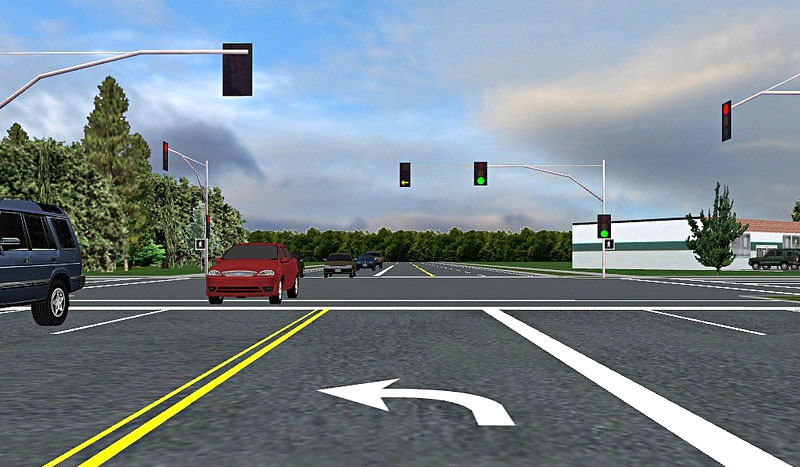Because drivers respond differently to different signal phasing sequences, engineers need to evaluate how drivers interpret the message that each phasing sequence is trying to convey. This research evaluated the safety and operational impacts of different left turn movement treatments at signalized intersections by using crash, video, and survey data. The results should help decision makers select more suitable signal phasing plans under various operational conditions.
Less than ten percent of intersections are signalized; however, more than 30 percent of intersection fatalities occur at signalized intersections. Signal phasing strategy is considered to be one of the most important factors influencing the safety and operations of signalized intersections. This project compared the safety of protected left turns with that of protected-permissive left turns with a flashing yellow arrow. Protected-permissive left turn phases have the potential to improve traffic operations by allowing more vehicles to complete their left turns during the permissive phase, especially in off-peak hours.
The researchers also compared the safety of doghouse displays with that of four-section vertical displays for protected-permissive left turns with a flashing yellow arrow. Doghouse displays accommodate permissive left turn movements during a circular green signal without a flashing yellow arrow. As a result, doghouse displays may create some confusions among drivers because a circular green signal indicates the allocation of the right-of-way, while left turning vehicles must yield to opposing traffic during the permissive phase with a circular green signal.
Finally, signal plans may change from a protected-permissive with a flashing yellow arrow to a protected-only phase at different times of the day, given traffic conditions. Previous evidence has suggested that protected-permissive phases with a flashing yellow arrow may contribute to more crashes during off-peak periods because of driver confusion.
The results of the driver comprehension survey showed that half of the drivers who had encountered intersections with a left-turn control mode that varied by time of day felt confused by that phasing strategy. On the other hand, a simulation-based analysis showed that changing the left-turn control mode by time of day yielded more efficient traffic operations and lower average delays.
Authors:
Ali Hajbabaie
Sattar Sattarov
Rasool Mohebifard
WSU Department of Civil and Environmental Engineering
Sponsors: PacTrans, WSDOT

